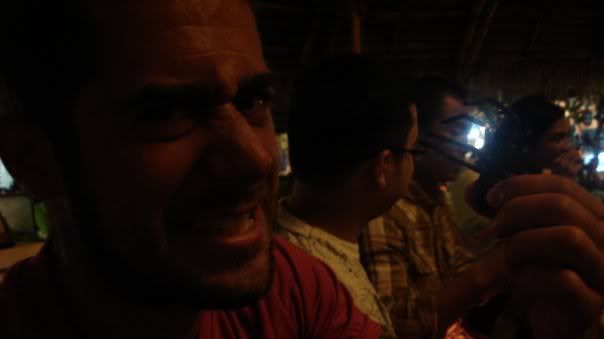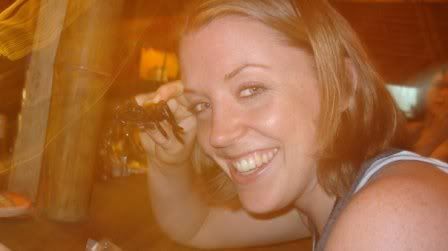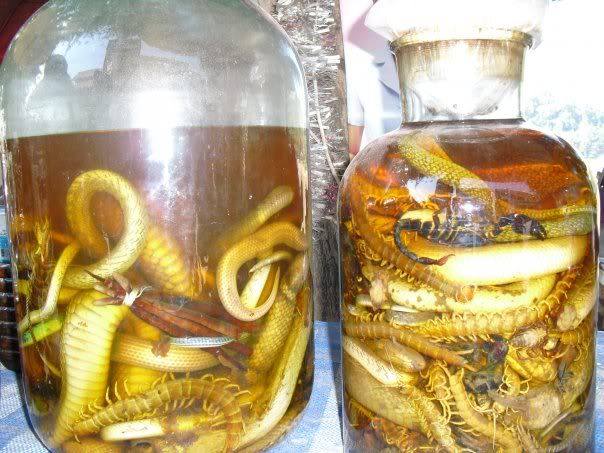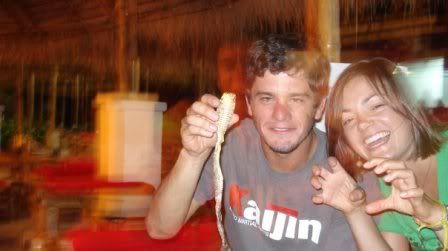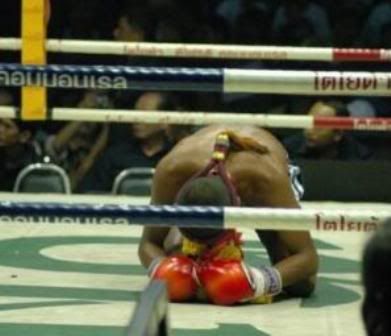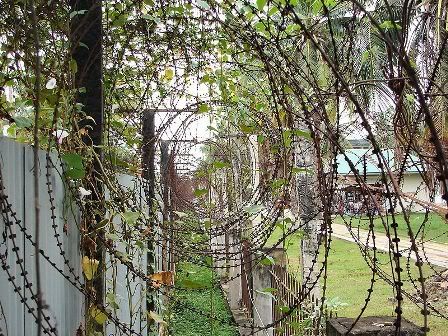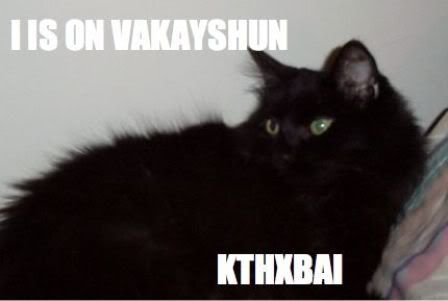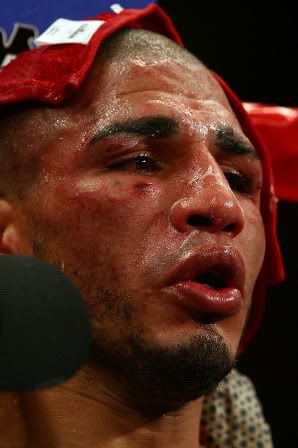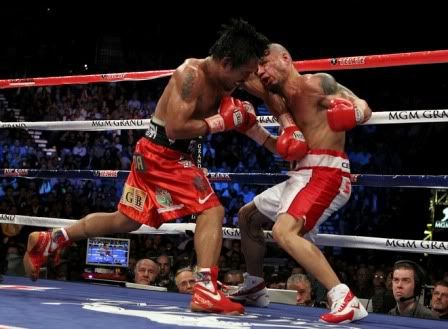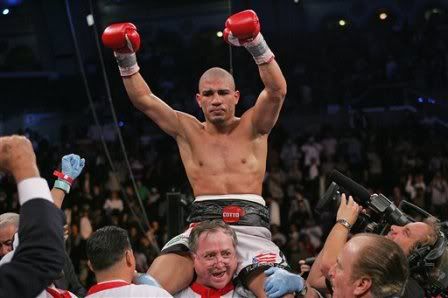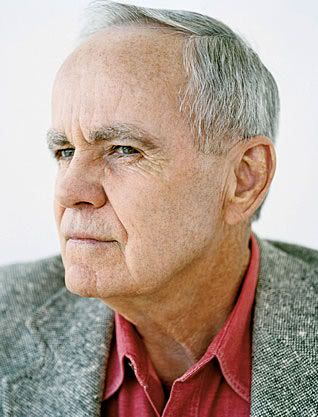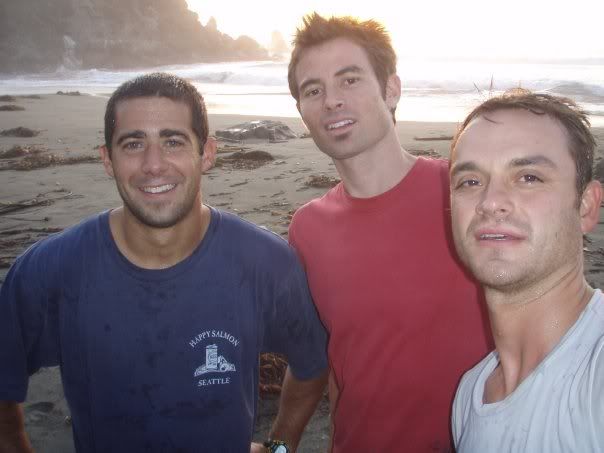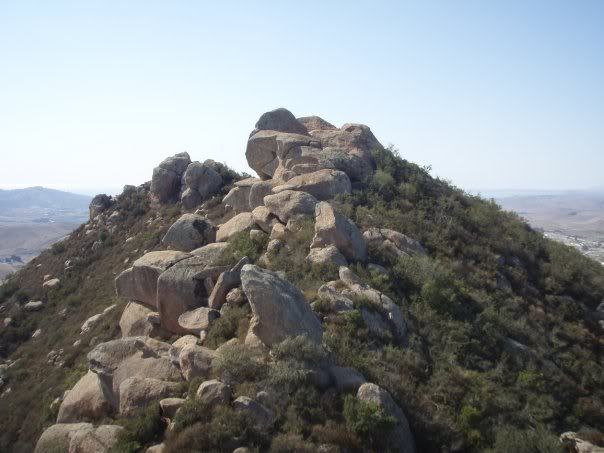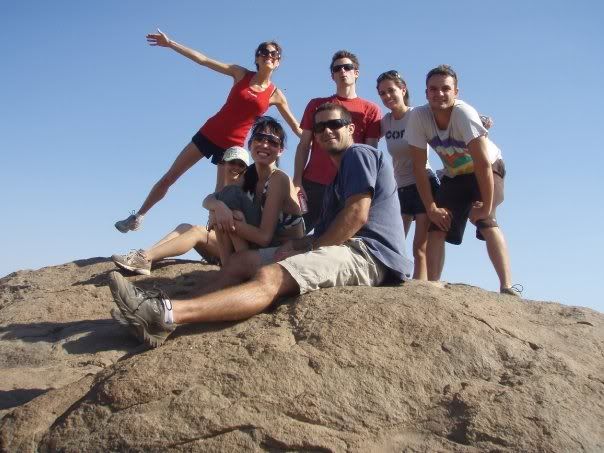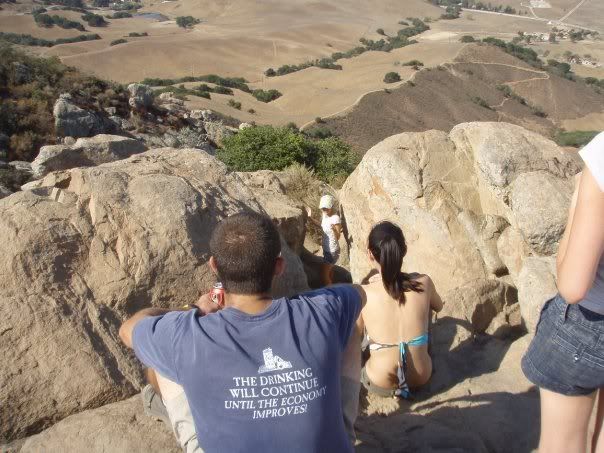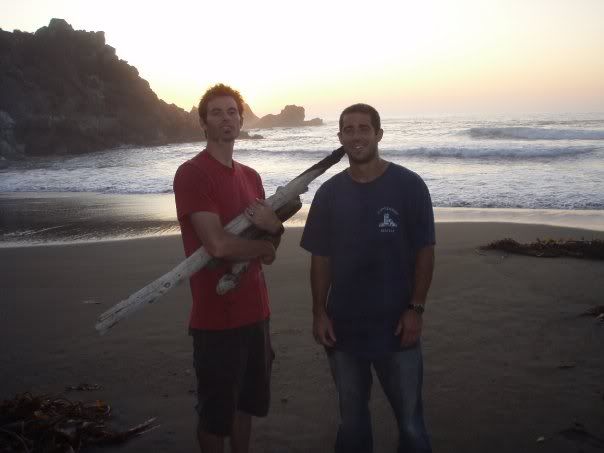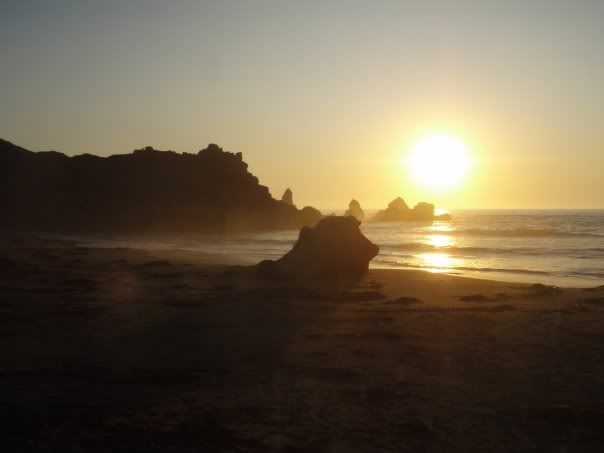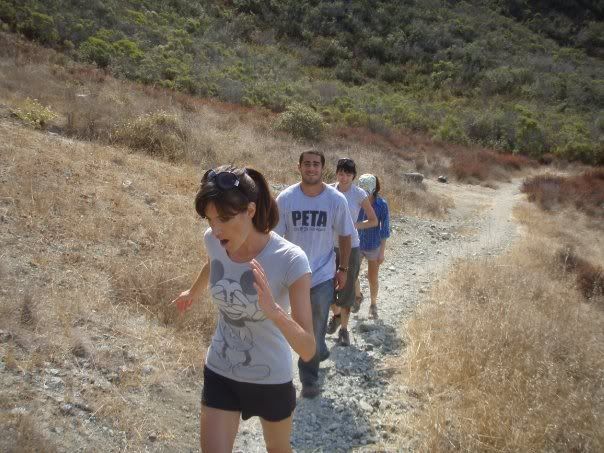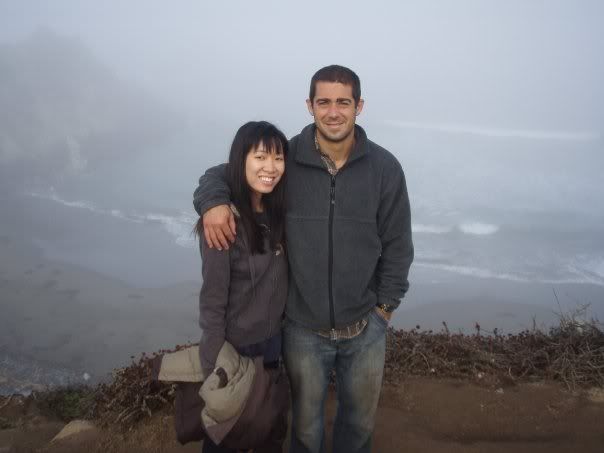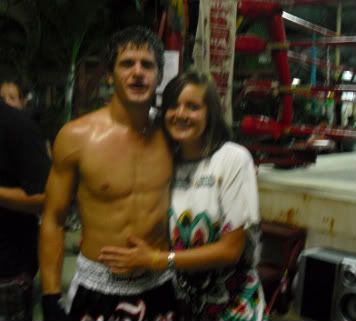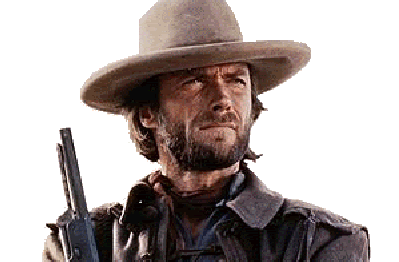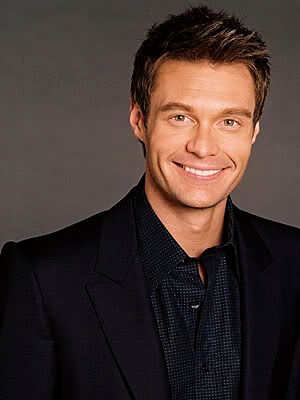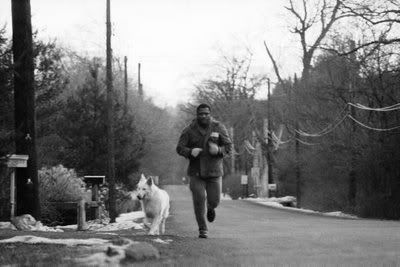"The view from San Jacinto is the most sublime spectacle to be found anywhere on this earth!" - John Muir
I was being driven to the airport by my Mom after a nice visit in Palm Springs when I noticed the mountain for the first time. Fueled by a weekend of reading "Backpacker" magazine and possibly too much caffeine, I said to myself, "I should climb that." I almost immediately let everyone know that I was going to do just that.
After basking in the glow and warmth of everyone's praises, I decided it would be a good idea to look into the logistics of the expedition. I was greeted with the following:
Missing HikerOutdoor Guide KilledMountain rescue unit helps dehydrated MarinesDisheartening. To make sure that I didn't die alone, I enlisted the company of my friends, Will and Kalvin. I made sure to tell them about the beautiful views and pleasant scenery that were sure to await us. As far as the dangers, why worry them needlessly?
Unfortunately, Will was unable to make this particular adventure, so I picked up Kalvin around noon on Friday. We employed full use of the carpool lane and mocked the commuters stuck on the 91 freeway.
My Mom, Grandmas, and Aunt Dory welcomed us with steak, salad and other goodies. Other goodies like beer.
The Cactus to Clouds trail begins in Palm Springs on the desert floor. The main problem that befalls many people aiming for the summit is the punishing heat of the Palm Springs desert. To avoid this, one needs to hit the trail early enough to climb several thousand feet of elevation before the sun comes up. Kal and I woke at 2am on Saturday morning. My Grandma Bev had prepared the coffee for us, and it turned out to be the equivalent of rocket fuel. Tasted like it too. With approximately 18 times the caffeine content of a mere mortal's coffee, Grandma's concoction had Kal and I babbling like school girls on the ride to the trail head.
The first step was near vertical, and the trend continued like that for the rest of the day. We had close to 3 hours of hiking in almost complete darkness. Fortunately, we were armed with head-lamps and a near-full moon. The little light that we had made the cliffs and peaks seem like we were on another planet.
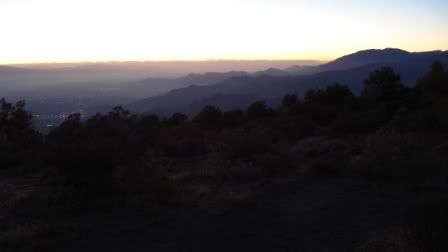
The sun rose over the horizon around 5:30am. It was stunning.
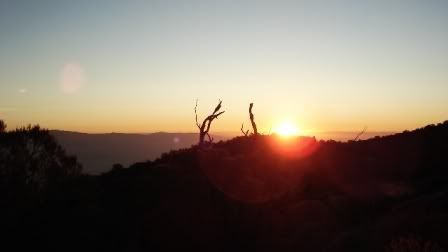
It was pretty, but it also increased the sweat factor considerably. We were lucky that it wasn't one of the 100+ degree days that Palm Springs was famous for, but it was definitely hot enough. That reminded me to be on the look out for rattle snakes. Several had been spotted on the trail in the last few weeks, another detail I didn't share with Kalvin. (I later found out that Kalvin used to trap and play with rattle snakes as a kid in Texas, so it wouldn't have mattered anyway.)
Up, Up, and Up. The vertical climb of the Skyline Trail is one of the steepest in the United States, and we, well, we noticed that.
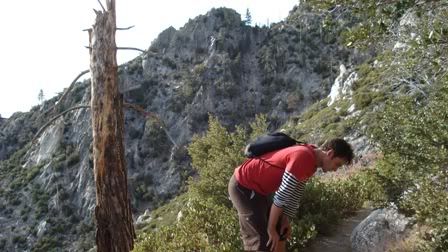
The thing about mountains is that every time you get to the top of a ledge or peak, there is another one just beyond that. Several times, we thought we were staring at the peak that would mark 8,000 feet and the end of the Skyline trail. We were wrong about this a lot. Actually, we took several wrong turns, scrambling up loose rocks and shale, and generally doing quite a bit of backtracking. Kal injured his knee on one such occasion, and basically toughed out the rest of the trip with a makeshift walking stick and a large dose of testicular fortitude.
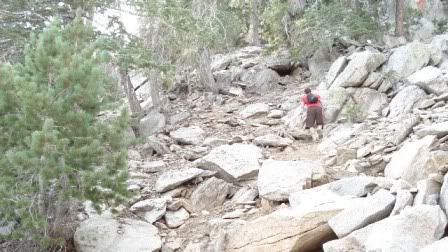
Whenever I got tired and wanted to rest, I would tell Kal that I wanted to take a picture. We got some good shots in this way.
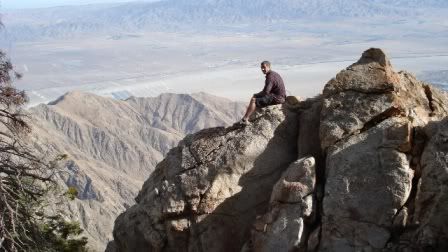
The lack of oxygen at high elevations affects different people differently. It obviously affected the two of us with delirium and idiocy. We decided that marine-style chants would make us feel better.
Martin: "When I say 'aint no, you say THANG, 'aint NO!"
Kal: "THANG!"
Martin: "AINT NO!"
Kal: "Thaaaannnng!"
This continued on for far longer than I would like to admit.
After 11 miles and 8,000 feet of elevation gain, we completed the Skyline Trail of the desert to the Aerial Tram Station. Exhausted, we feasted on beef jerky, a granola bar and water, staring enviously at everyone else's superior rations. I considered murdering two friendly guys who we met on the trail for their burritos.
After about a half hour of procrastination, we continued on. Another 5.5 miles would take us to the summit. We met some really nice folks on this part of the trail, including Dave G, Florian and Hikin' Jim from the
Mt. San Jacinto message board. After one last hard push, we scrambled up the last cliff to get to the summit. The view was amazing, and lived up to Muir's praises.
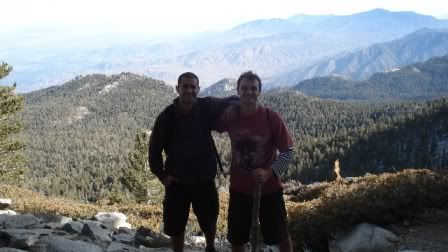
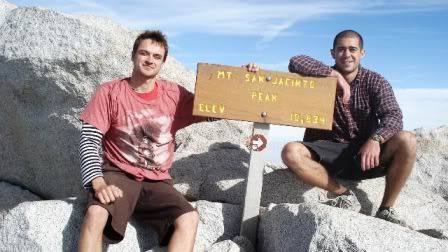
The 5.5 miles back to the tram station sucked. No other comments really necessary on that. The beers and buffalo wings at the tram restaurant restored our good humor. After a good 14 hours on the trail, we arrived back at our car, and I managed to get us home without running into anything solid enough to cause damage.
Asleep by 8pm, we both slept like the dead.
I'll do this again...maybe.
We left the next day, making sure to give a final salute to the mountain on the way out.



